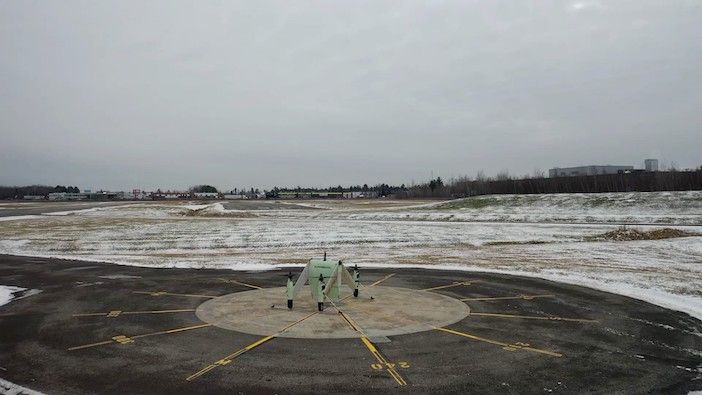Engineers at Bell have conducted the first flight of an alternate configuration of its Autonomous Pod Transport drone at its facility Mirabel, Quebec facility.
The test flight was performed to explore variations in the design and evaluate changes in performance, autonomy and user interactions. The vehicle operates with the same architecture and propulsion system of the original (Autonomous Pod Transport) APT tail-sitter aircraft, but uses a different airframe.
This configuration evaluated alternative design features such as a fixed central pod that favors containerized payloads, side access to payload bays, swept wings and articulated V-Tails.
Michel Dion, senior manager of Innovation at Bell said, “We are excited to demonstrate this configuration to show our potential customers how flexible, scalable, and customizable this aircraft can be.
The test flight was conducted in partnership with drone technology company ARA Robotics and was co-funded by the Canadian Technology Demonstration Program.
The APT has a range of 35 miles (56km) with a payload of up to 70 lbs and a top speed of 100mph (160km/h). It has been under development by Bell for defense and military applications since
The APT consists of two wings connected by the central payload pod with rotors at the end of each wing. The drone, which can be programmed to follow a route automatically, takes off and lands vertically and transitions to horizontal flight when in the air.
According to Bell the APT program has completed hundreds of test flights and several demonstrations to potential commercial and military customers to date. The drone was originally developed for a NASA program looking at drone integration, the Systems Integration and Operationalization demonstration activity and first flew autonomously in August 2019.





